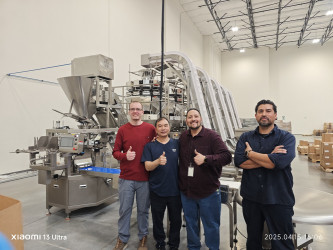The Metal Detector Conveyor: Enhancing Safety and Efficiency Across Industries
In today's industrial landscape, ensuring product safety, quality control, and operational efficiency are paramount. Metal detector conveyors have emerged as a crucial component in various industries, playing a pivotal role in safeguarding product integrity, meeting regulatory standards, and optimizing production processes. This article will delve into the significance of metal detector conveyors in food plants, recycling plants, their operational mechanisms and the myriad benefits they offer.
Importance of Metal Detector Conveyors
1. In Food Plants
The food industry faces stringent regulations to maintain the highest standards of safety and quality. Metal detector conveyors are integral in this sector to detect and remove metallic contaminants from food products during processing and packaging stages. The presence of metal contaminants in food items can lead to severe health hazards for consumers and pose risks to brand reputation.
According to the Food and Drug Administration (FDA), approximately 48 million people in the United States suffer from foodborne illnesses annually, highlighting the critical need for robust safety measures in food processing. Metal detector conveyors act as a frontline defense, preventing contaminated products from reaching consumers and averting potential health crises.
2. In Recycling Plants
In recycling facilities, metal detector conveyors play a vital role in separating valuable materials from waste streams efficiently. These systems help in identifying and extracting metallic substances from recyclable materials, ensuring the purity and quality of the end products.
Recycling plants encounter various metallic contaminants such as aluminum, steel, and other ferrous and non-ferrous materials. Metal detector conveyors facilitate the separation of these metals from recyclables, enabling streamlined processes and enhancing the value of the recycled materials.
How Metal Detector Conveyors Work
Metal detector conveyors operate on electromagnetic principles to identify and eliminate metallic contaminants from conveyed materials. They typically consist of three main components:
- Transmitter Coil: Emits electromagnetic waves into the passing materials.
- Receiver Coil: Detects changes in the electromagnetic field caused by metallic objects.
- Signal Processing Unit: Analyzes the received signals and triggers an alert or action when metal contamination is detected.
When a metal contaminant passes through the electromagnetic field generated by the transmitter coil, it disrupts the field, altering the signals received by the receiver coil. This disruption triggers the signal processing unit to activate alarms, reject mechanisms, or stop the conveyor, preventing the contaminated product from advancing further in the production line.
Benefits of Metal Detector Conveyors
-
Enhanced Product Safety: By swiftly identifying and removing metal contaminants, these systems uphold product integrity, mitigating health risks for consumers.
-
Compliance with Regulations: Metal detector conveyors help industries comply with stringent regulatory standards imposed by agencies like the FDA, USDA, and CE.
-
Improved Operational Efficiency: Detecting and eliminating contaminants prevent production line stoppages, reducing downtime and ensuring uninterrupted operations.
-
Protection of Equipment: By preventing metal contamination, these systems safeguard machinery from damage caused by metallic particles.
-
Maintaining Brand Reputation: Ensuring the delivery of safe and high-quality products safeguards a brand's reputation and consumer trust.
Conclusion
Metal detector conveyors are indispensable in modern industrial settings, offering a robust solution to ensure product safety, regulatory compliance, and operational efficiency. Their ability to swiftly identify and eliminate metallic contaminants from various materials significantly contributes to maintaining high standards in food and recycling industries. As technology continues to advance, these systems will likely evolve, becoming even more efficient and essential in safeguarding product integrity across diverse sectors.



